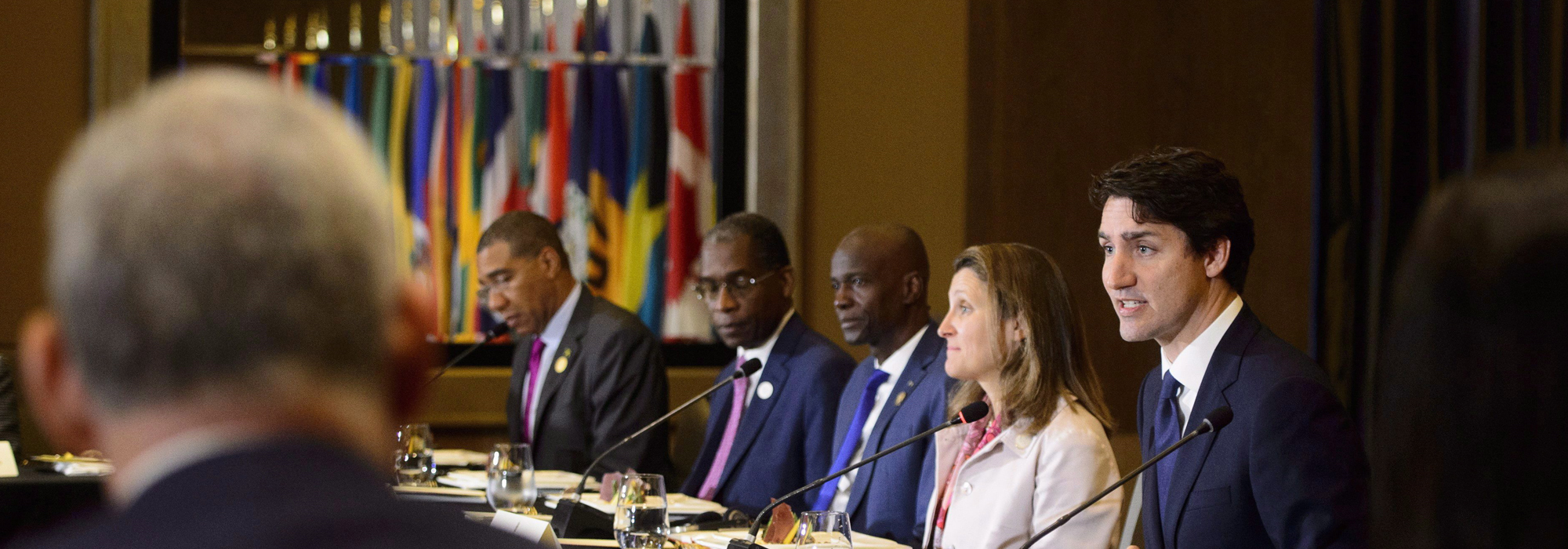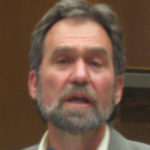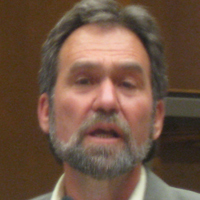
For too long, culture, science and diplomacy have suffered from neglect in Canada. Yes, they share a high-toned reputation, but they have been widely misunderstood — disdained even — by parliamentarians, public servants, scholars, the media, opinion leaders, think tanks and the public.
Rather than looking at them as esoteric outliers in the overall scheme of things, we need to see them for what they are: Undervalued instruments of statecraft. And they should once again be integral to Canada’s contemporary image, reputation and brand.
I argued as much when I testified before the Senate Foreign Affairs Committee last December.
Culture, science diplomacy and international policy are the far-flung precincts of our shared national experience, and Canada’s marginalization of them has taken a toll on international relations and Canadian foreign policy.
To understand how, we need to go back to basics:
Culture: It is all-encompassing and amorphous, but not airy-fairy or fuzzy. It is the norms, customs, characteristics, traditions, artistic expression and behaviour of human groups. We learn about it through literature, film, journalism, music, dramatic and documentary television, scholarship, and interpersonal exchange — which I think is key.
Science: It is an empirical and objective form of knowledge creation, drawing on postulation, interrogation, trial and error, and rigorous scrutiny to provide systematic insights into the nature of things. It is civilization’s best bet for achieving progress.
Diplomacy: It is the management of international relations characterized by dialogue, negotiation, compromise, representation, problem solving and complex balancing. Its tools include soft power — the power of attraction — public and digital engagement, persuasion and influence, lobbying and branding.
Public diplomacy is the term for when governments bundle culture and science with education, media relations and advocacy to pursue interests internationally, promoting policies and projecting values.
It is worth examining the connections between these three critical, often overlooked (remember the “Third Pillar,” anyone?) aspects of Canadian foreign policy.
Diplomacy uses active listening and meaningful two-way exchanges, choosing talking over fighting, and it supports peaceful resolution. It reinforces cooperation, and accommodation. Diplomacy’s art content, by the way — creativity, imagination, innovation, improvisation — remains largely unappreciated.
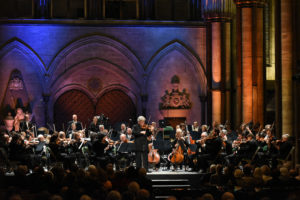
Science can be used to address the drivers of underdevelopment and insecurity, ranging from climate change and diminishing biodiversity to public health and management of the global commons. Science reinforces openness, transparency, collaboration and constructive dissent as constituent elements of culture.
Science and diplomacy once enjoyed pride of place within the firmament of Canadian foreign policy. From Pierre Trudeau to Justin Trudeau, historic achievements have shaped Canada’s values, cultural identity and brand. Think: helpful fixing, honest brokerage, peacekeeping and enlightened approaches to the formulation of international policy – the one-time essence of Canadian middle powerdom.
Pierre Trudeau energetically supported, and then co-chaired the Cancun Summit on North-South Relations. His government was deeply involved in the Law of the Sea (UNCLOS) negotiations, which produced the treaty signed by Canada in 1982. Trudeau’s still-born “Strategy of Suffocation,” aimed at slowing the arms race, and his much-maligned, late Cold War “Peace Crusade,” had they borne fruit, would have both relied heavily upon scientific verification.
Under Brian Mulroney, Canada significantly upped its game – and burnished its image and reputation – by rolling out a string of environmental accomplishments. The government concluded the Acid Rain Treaty with the USA and hosted the meeting that produced the Montreal Protocol on Substances that Deplete the Ozone Layer. It led in the organization and delivery of the landmark “Rio Earth Summit” (UNCED). That convocation produced an unprecedented range of achievements, including: the Rio Declaration on Environment and Development; the Framework Convention on Climate Change; the Convention on Biological Diversity; the UN Convention to Combat Desertification; the Statement of Forest Principles, the Commission on Sustainable Development, and Agenda 21.
Under Jean Chrétien, the pace and intensity of Canadian science diplomacy ebbed, and support for international science was reduced by cost- and deficit-cutting measures associated with the Program Review. Still, his government marshalled a great deal of scientific evidence to win the battle for public opinion and defeat Spain in the so-called “Fish War” and strongly supported the essential but unheralded Global Partnerships Program. It hosted the first Meeting of the Parties to the Kyoto Protocol (COP 23), which was soon after ratified by Parliament.
Paul Martin established the Council of Canadian Academies and appointed a National Science Advisor whose writ – until the position was eliminated by the Conservative government in 2008 – extended to issues of foreign policy.
Whatever might be said about the performance of any of these leaders, when compared against the carnage inflicted by the Harper government’s “war on science,” their cumulative record veritably shines.
For almost half a century, science occupied a privileged position within Canadian foreign policy. If the government of Canada is to re-establish that aspect of its liberal internationalist credentials, new directions will have to be explored.
Culture, science and diplomacy transcend borders and serve as a bridge between nations, groups and peoples.
International cultural relations and artistic expression deepen understanding and forge networks and partnerships, and weave together the exquisitely delicate fabric of civilization. They are an antidote to some of the downsides of globalization, which tends to exacerbate inequality and to socialize costs while privatizing benefits, and to salve the paradox of connectivity, which, even as it homogenizes and integrates, tends to fragment and alienate, disrupt and divide.
The case for prioritizing culture, science and diplomacy is compelling.
And yet: The responsibility and accountability for public diplomacy, culture, arts and science are splintered, atomized and uncoordinated. These functions are split between Global Affairs Canada; Heritage; Innovation, Economic Development and Science; Environment; Natural Resource; Health, Parks Canada; the myriad granting councils and on and on.
Responsibility for these sprawling files is diffuse, disaggregated. There is no strategy and no plan.
Canada 150 was an unrealized opportunity to showcase Canadian diplomacy, culture and the performing arts. But to expect an active, engaged foreign policy from a beaten-down foreign and public service is a bit like asking a former weightlifter who has been lying on a gurney in the hallway for 10 years on life support, with muscles atrophied and reflexes dulled, to get up and run a marathon.
It’s not going to happen.
Governments everywhere face daunting public policy and administrative challenges. But if the relationship between these swaths of enterprise can be understood, the possibilities are without limit.
Culture in the arts, diplomacy and science should be understood as the defining features of “Brand Canada,” the world’s globalization and innovation nation.
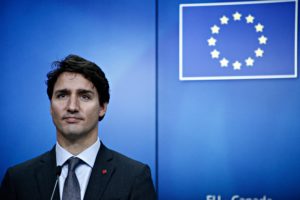
What, then, are the essential policy and resource implications for decision-makers?
Here are five takeaways:
First: Identify culture, science and diplomacy as international policy priorities. Situate them within an integrated and coordinated framework, strategy and plan. Right now, they are absent.
Second: Rebuild. Reinvest in culture, diplomacy and science. There is a direct dialectal relationship between results and resources, and the support for basic science promised in the recent federal budget, although ambiguous about internationalization, is encouraging. Moreover, this formula is highly cost-effective and leveraged. When I entered government in 1981, I was in large part skeptical that there was any significant place for culture or science in diplomatic practice. Mea culpa. After 30-plus years of watching it and sometimes doing it, I am a believer.
Third: Public diplomacy, including culture, the arts, education and science, connects directly with democratization, transparency and openness. Reinstate the panoply of promotional programs that were cut by the Conservatives in 2012, and augment them with new initiatives pitching to the popular, not just the elites. Cultivate the “grass tops”: the opinion leaders, the organizations and associations, and the influence aggregators. But don’t forget the grassroots: students, labour and the general public. Focus not only on the usual suspects, but also the strange bedfellows. The lot… go storefront; go retail, go on tour with this stuff.
Fourth: The government has repeatedly declared its commitment to culture, arts and science, but has largely under-delivered. Last February’s budget contained about $4 billion in support for science, but little of that was directed towards its internationalization. There exists a real risk of plunging headlong into the perilous “say-do” credibility gap. What, for instance, is Canada doing to substantially support the achievement of the UN Sustainable Development Goals?
Fifth: The next federal election is now only two years off, the G-7 presidency and summit hosting are now upon us and we have declared our candidacy for an elected seat on the UN Security Council with the campaign in 2020 and the vote in 2021. What exactly is on offer?
The emperor desperately needs some presentable new clothes. There is no substitute for a comprehensive approach to using culture and science as instruments of foreign policy.
Culture and science with the international political agency inherent in diplomacy can help build relationships that go beyond commercial or state-centric alternatives. These currents run deeper and tap into something very elemental and very human.
They are based upon two-way interpersonal communications, meaningful exchange.
They enlarge understanding.
They encourage collaboration.
Most of all, they penetrate places of the heart and mind that are immune to the machinations of politics, the appeal to narrow economic interest, or the blunt application of armed force. The connections that are forged tend instead to be strong, resilient and enduring.
The potential is there, and Canada desperately needs those kinds of partnerships if we are ever to attain even a reasonable facsimile of our global promise.
Carpe diem.
Photo: LIMA, Peru – Prime Minister Justin Trudeau sits beside Minister of Foreign Affairs Chrystia Freeland as they host a Caribbean Leaders Working Luncheon on the sidelines of the Summit of the Americas on Friday, April 13, 2018. THE CANADIAN PRESS/Sean Kilpatrick
Do you have something to say about the article you just read? Be part of the Policy Options discussion, and send in your own submission. Here is a link on how to do it. | Souhaitez-vous réagir à cet article ? Joignez-vous aux débats d’Options politiques et soumettez-nous votre texte en suivant ces directives.



